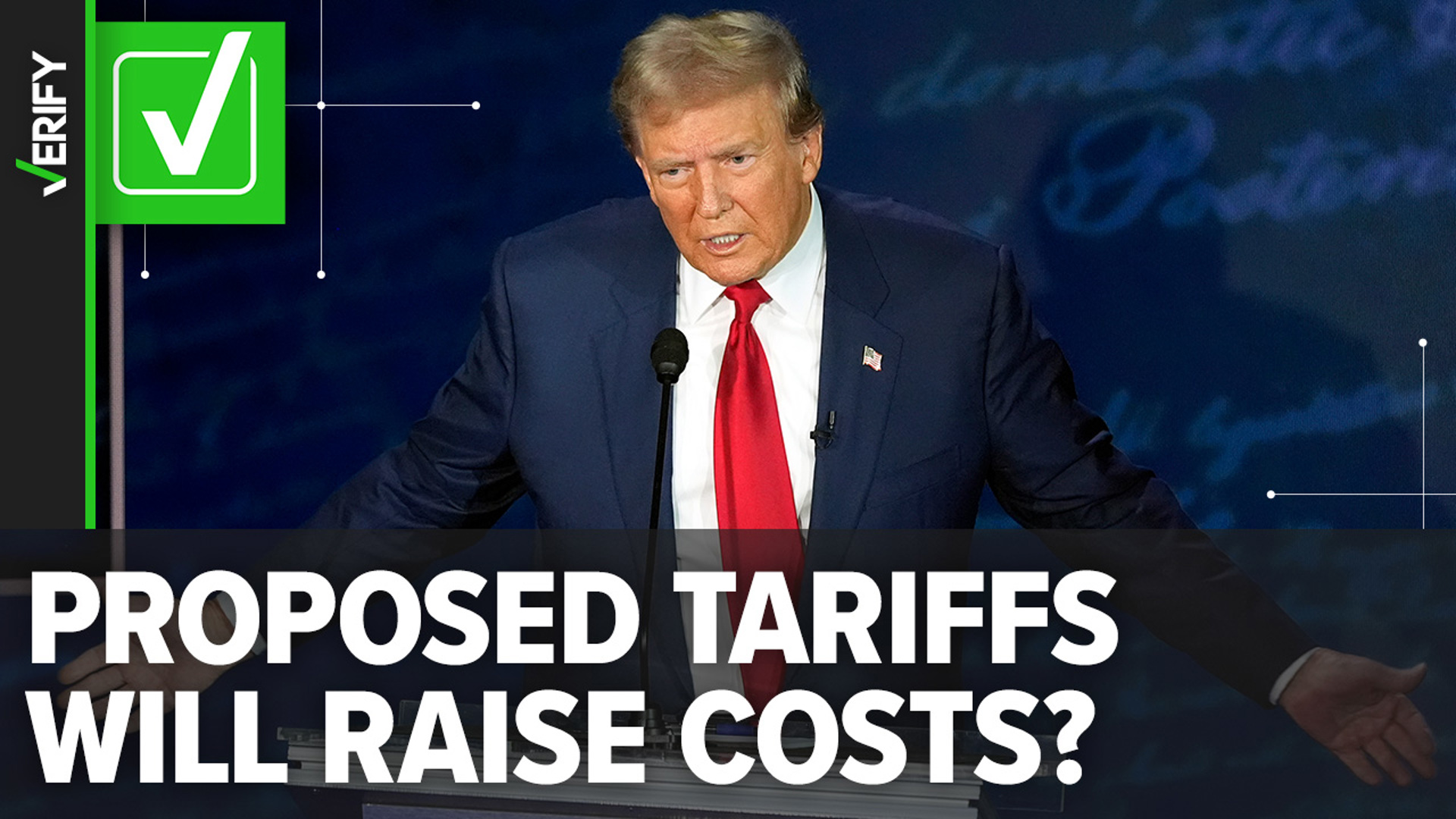Trump's Tariffs: The Devastating Impact On Small Businesses

Table of Contents
Increased Costs of Goods and Services
Trump's tariffs directly increased the price of imported goods and raw materials, significantly impacting small businesses reliant on global supply chains. These increased costs translate into lower profit margins and a diminished ability to compete with larger corporations better equipped to absorb such economic shocks.
- Higher input costs lead to reduced profit margins: The added tariff costs are often passed down the supply chain, squeezing profit margins for small businesses that lack the pricing power of larger firms. This makes it harder to maintain operations, invest in growth, and provide competitive wages.
- Difficulty in competing with larger businesses: Larger businesses often have greater financial resources to absorb tariff increases, allowing them to maintain competitive pricing. This leaves smaller businesses at a significant disadvantage, struggling to maintain market share and profitability.
- Examples of specific goods affected: Industries heavily impacted included steel, aluminum, and textile manufacturers, who faced substantial increases in input costs. For instance, furniture makers relying on imported wood or fabric experienced significant price hikes, impacting their ability to offer competitive products.
- Case studies of small businesses struggling with increased costs: Numerous case studies highlight the struggles of small businesses facing escalating costs due to tariffs. Many were forced to lay off employees, reduce production, or even close their doors entirely.
Reduced Consumer Demand
The increased costs resulting from Trump's tariffs led to a ripple effect throughout the economy, reducing consumer demand and further harming small businesses. Higher prices for goods and services, whether imported or domestically produced, decrease consumer purchasing power.
- Lower sales volumes for small businesses: As consumers tightened their belts, small businesses experienced a drop in sales, especially those heavily reliant on consumer spending. This downturn forced many to cut expenses, postpone investments, and even consider closure.
- Impact on businesses selling domestically produced goods: Even businesses producing goods domestically felt the pinch. Increased prices of imported goods often led to similar price increases for domestically produced alternatives, further reducing consumer demand.
- Examples of industries particularly impacted: Retail, manufacturing, and the restaurant industry were among those significantly impacted by reduced consumer spending due to tariff-induced inflation.
- Data on declining consumer confidence or spending: Economic data from the period reflects a decline in consumer confidence and spending, corroborating the negative impact of tariffs on overall economic activity and small businesses.
Supply Chain Disruptions
Trump's tariffs significantly complicated international trade and disrupted global supply chains, placing an undue burden on small businesses often lacking the resources to navigate such complexities.
- Delays in receiving essential goods and materials: Tariffs introduced delays in customs processing and increased bureaucratic hurdles, leading to delays in receiving essential materials. This disruption hampered production schedules and negatively impacted timely delivery to customers.
- Increased logistical costs and administrative burdens: Navigating the increased complexities of international trade under tariffs resulted in higher logistical costs and increased administrative burdens for small businesses, further squeezing their already-thin profit margins.
- Difficulty in finding alternative suppliers: Reliance on specific suppliers became riskier due to tariffs, forcing small businesses to search for alternative suppliers, a time-consuming and costly process. This often resulted in compromised quality or higher costs.
- The increased vulnerability of small businesses with less diversified supply chains: Smaller businesses with less diversified supply chains were particularly vulnerable to disruptions, as they lacked the flexibility to quickly adjust to changes in global trade patterns.
Limited Access to Credit and Capital
The economic uncertainty created by Trump's tariffs made it significantly harder for small businesses to secure loans and access necessary capital for growth and survival.
- Lenders are more hesitant to provide loans: Lenders became more risk-averse during periods of economic uncertainty, tightening lending standards and making it more difficult for small businesses to access credit.
- Increased difficulty in obtaining business loans or lines of credit: The increased risk associated with lending during times of trade instability resulted in fewer loan approvals and stricter lending terms for small businesses.
- Impact on business expansion and growth opportunities: Limited access to capital hindered expansion plans, investments in new technologies, and overall business growth, limiting opportunities for small businesses to adapt and thrive.
- Statistics on small business loan applications and approvals during tariff periods: Data from this period showed a decline in small business loan applications and approvals, further demonstrating the negative impact of the economic uncertainty caused by Trump's tariffs.
Conclusion
Trump's tariffs had a profoundly detrimental effect on small businesses, resulting in increased costs, reduced consumer demand, supply chain disruptions, and limited access to credit. The impact was disproportionately felt by small businesses compared to their larger counterparts, who possess greater resources to withstand economic shocks. Understanding the devastating impact of Trump's tariffs on small businesses is crucial. Learn more about how these protectionist trade policies affect your community and advocate for policies that support small business growth and economic resilience.

Featured Posts
-
 Tramp I Dzhonson Raznye Vzglyady Na Politicheskuyu Situatsiyu V Ukraine
May 12, 2025
Tramp I Dzhonson Raznye Vzglyady Na Politicheskuyu Situatsiyu V Ukraine
May 12, 2025 -
 Ministers Refusal Royal Honors For Asylum Volunteers Blocked
May 12, 2025
Ministers Refusal Royal Honors For Asylum Volunteers Blocked
May 12, 2025 -
 India Pakistan Conflict Five Indian Soldiers Killed Despite Truce
May 12, 2025
India Pakistan Conflict Five Indian Soldiers Killed Despite Truce
May 12, 2025 -
 Stop The Influx Parliaments Plea To Migration Minister On Illegal Workers
May 12, 2025
Stop The Influx Parliaments Plea To Migration Minister On Illegal Workers
May 12, 2025 -
 Astronauts Nine Month Space Stay Cbs News Report
May 12, 2025
Astronauts Nine Month Space Stay Cbs News Report
May 12, 2025
